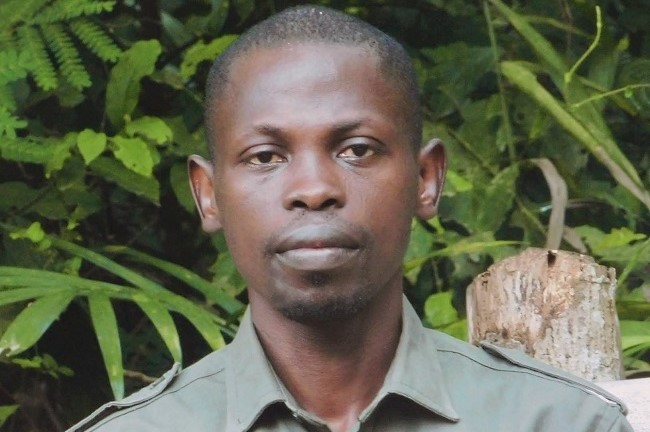Emmanuel Olabode, Project Manager of the Nigerian Conservation Foundation’s Omo Forest Elephant Initiative, speaks on the growing threats to forest elephants, successful models of coexistence from across Africa, and why community-driven conservation is the key to survival

Deep in the ancient canopy of the Omo Forest Reserve in Ogun State, Nigeria, lives one of West Africa’s most critically endangered species: the African forest elephant. Once roaming vast expanses, their numbers have been decimated by poaching, habitat loss, and human-elephant conflicts. Today, their survival rests precariously on the shoulders of conservationists and the very communities who share their home.
For Emmanuel Olabode, Project Manager of the Nigerian Conservation Foundation’s (NCF) Omo Forest Elephant Initiative, the story of saving these elephants is both urgent and personal. “Climate change, water scarcity, habitat shifts, poaching, and even sociopolitical instability – all these are merging threats we must urgently address,” he tells us.
Learning from Africa’s Success Stories
While Nigeria faces steep challenges, Olabode points to innovative successes across Africa that prove coexistence between humans and elephants is possible.
In Kenya, the much-celebrated Elephants and Bees Project has achieved over 80% success in reducing farm raids by using beehive fences. “Elephants fear bees, especially around sensitive areas like their trunk and eyes. The hives hung along farm perimeters both deter elephants and provide honey as a new income stream for communities. It’s a win-win,” Olabode explains.
In the Congo Basin, early-warning systems powered by radio collars and remote sensors alert villagers when elephants approach farmland. Community patrol teams then use non-lethal deterrents – such as bright lights and firecrackers – to steer the giants back into the forest. “This model combines technology with local action, and it works,” says Olabode.
Changing Hearts and Minds
But technology alone won’t solve the crisis. “The best strategy is community engagement, economic incentives, and education,” Olabode stresses. “When communities are part of the protection effort, they see elephants not as threats but as assets. If people have livelihoods, schools, clean water, and healthcare, their attitudes toward conservation shift.”
The NCF initiative is working to build such local ownership—training rangers, employing community scouts, and exploring alternative livelihoods to reduce dependence on logging and poaching.
Why Forest Elephants Matter
Beyond their iconic status, forest elephants are “ecosystem engineers,” vital to the health of tropical forests. “They disperse seeds, shape vegetation, and store carbon. If we lose them, we lose the forest’s balance,” Olabode warns. Emerging financing models, such as carbon credits tied to elephant conservation, could transform how their protection is valued.
A Vision for the Next 20 Years
For Olabode, success in the coming decades would mean stabilising and growing elephant populations, reconnecting fragmented habitats, eliminating retaliatory killings, and securing long-term funding. “We must ensure forest elephants move from being critically endangered to a species on the path of recovery,” he says.
This requires stronger anti-poaching laws, compensation schemes for farmers who lose crops, and integrated land-use planning to ensure human activities don’t choke off elephant corridors. “It’s about harmony,” he emphasises. “Communities have lived with these elephants for generations. Conservation must give them the tools, incentives, and dignity to continue doing so.”
Clifford Omonu, Research Fellow with Forest Research Institute of Nigeria (FRIN) and Manager to the UNESCO site in Omo Forest Reserve, opined that Nigeria elephants, both savannah and forest species, are critically endangered due to increasing human activities such as deforestation, farming, and settlement expansion.
“With fewer than 300 elephants remaining in the country, their habitats are shrinking and becoming fragmented, leading to a rise in human-elephant conflict. Elephants often stray into farmlands, destroying crops and triggering retaliation from local communities. This conflict, worsened by weak environmental laws and poor enforcement, has led to killings and a general decline in elephant populations. The root causes include habitat encroachment, lack of awareness, and absence of strong government policies to protect these keystone species.
“To address these challenges, innovative conservation strategies are essential. These include restoring elephant migration corridors, using natural deterrents like chili-pepper fences, and engaging communities through adult education and farmer field schools. Community involvement has already proven effective in areas like Omo Forest Reserve, where elephant numbers are rising. Additionally, long-term strategies such as immunocontraception may help manage populations in the future. Ultimately, government intervention, through updated and enforced wildlife protection laws, is vital to ensure elephants and humans can coexist in harmony and safeguard Nigeria’s ecological future,” he suggested.
Protecting elephants in Nigeria is not just a local responsibility. It demands international cooperation – from intelligence sharing on ivory trafficking to DNA forensic tracking of seized ivory. “The threats are global, and so must be the response,” Olabode insists.
As the sun sets over the Omo Forest, the challenge is clear: without urgent action, Nigeria risks losing its last forest elephants forever. But with communities empowered, technology harnessed, and the world listening, there is hope.
“The elephants are not just wildlife,” Olabode concludes. “They are part of our heritage, our forests, our future. To save them is to save ourselves.”
By Ajibola Adedoye
This article (“How communities and innovation can save Nigeria’s last forest elephants – Forest ranger”) was funded by a grant from the United States Department of State (via Wild Africa). The opinions, findings, and conclusions stated herein are those of the author(s) and do not necessarily reflect those of the United States Department of State
